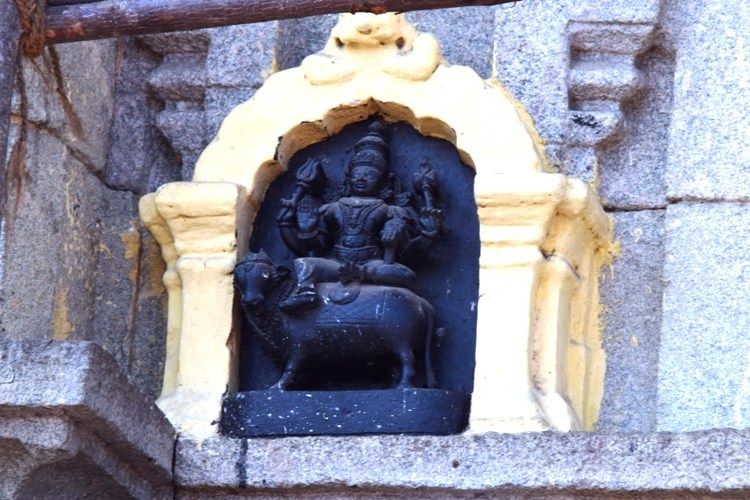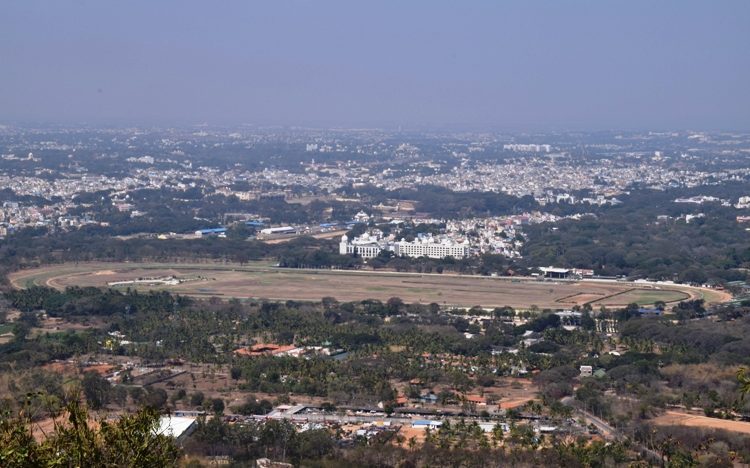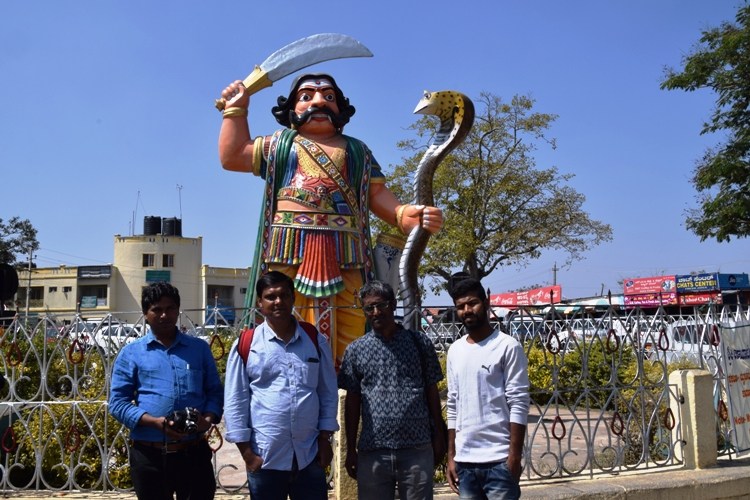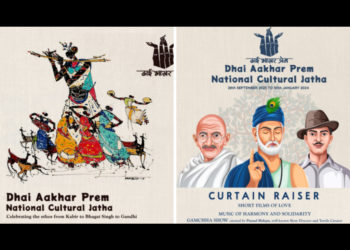Chamundeshwari is considered the family deity of the Wodeyar dynasty that ruled what was then the tiny state of Mysore between 1399 and 1947. The idol of the goddess is seated on the golden howdah during the ceremonial procession that forms part of the famous Mysore Dasara pageant – because the Maharaja became only one in name after the abolition of the monarchy when India became a republic in 1950. The Chamundi Hill near Mysore now has a temple built in Dravidian style, and special pujas conducted here by the Chief Minister of Karnataka mark the commencement of the ten-day Dasara festivities, the high point of the state’s cultural calendar.
Chamundeshwari is considered a fierce form of the feminine divinity, Shakti or Parvati, and is often portrayed as haunting cremation grounds or fig trees. The worship of the goddess involves ritual animal sacrifices and the offering of wine. In the ancient times, human sacrifices were performed too. Originally a tribal goddess, Chamunda was assimilated into Hinduism and later included in the Jain pantheon too. According to Ramkrishna G. Bhandarkar, she was a tribal goddess of the Munda people and was assimilated into Tantric worship after being appropriated for the mainstream worship system (Vaisnavism, Saivism and Minor Religious Systems, 1995, page 205).
 The Chamundeshwari Temple undergoing renovation
The Chamundeshwari Temple undergoing renovation
In Jainism, however, her worship features offering of only plant products, and no meat or liquor. She is also known as the goddess of war, famine and epidemics. She is depicted in iconography as having eight arms, wearing a garland of heads, with weapons such as the trident, sword and mace. She also has a bowl from which she is said to drink the blood of the vanquished enemy. In an 11th-12th-century icon on display in the National Museum, Delhi, she is seen seated on a corpse – lean and with a fierce, ugly face.
The mainstream story of Devi Chamundi is narrated in the Markandeya Purana. Two Asura brothers, Sumba and Nisumba, acquired new powers through severe penance, and then began to harass the Devas and the people living on the Earth. The Devas prayed to Devi Parvati, who took the form of a beautiful young maiden and came down to Earth. The Asura brothers were drawn to her beauty and sent emissaries to entice her to their kingdom. She refused. Then their generals Sandan and Mundan tried to forcibly take the maiden with them but she took on the form of Kali and fought and destroyed them. She was thus called Samundi or Samundeshwari – the one who was victorious over Sandan and Mundan. Later this became Chamundi or Chamundeshwari.
 A miniature idol found on the wall of the Chamundeshwari Temple
A miniature idol found on the wall of the Chamundeshwari Temple
Recent studies by historians and experts on folklore and religion have shown that the hill now known as Chamundi Hill was earlier known as Marbala betta or Mahabaladri, or the hill of Mahabaleshwar – a small temple of Mahabaleshwara is still found at the highest point of the range. But in 1399, Yaduraya, a vassal of the Vijayanagar Empire, allegedly had a dream about the goddess Chamundi and won a battle against Maranayaka who was then the ruler of the area. Thus was established the Yadu dynasty in the region, with the temple of the goddess coming under its patronage. Yaduraya ruled till 1423, and his successors continued as vassals of the Vijayanagar Empire, focusing on the worship of the goddess and grand celebrations. In 1565, the Vijayanagar Empire fell and the Wodeyars began ruling on their own, without paying tribute.
 The view of the city of Mysore from Chamundi Hill
The view of the city of Mysore from Chamundi Hill
The temple of Chamundeshwari in Mysore became what it is now in four stages. According to Prof Nanjaraj Urs, a historian from Mysore, the temple was at first the shrine of an ancient folk goddess with eight arms, Maramma. Later it housed a Jain Yakshini called Vaasantika, before being turned into a folk Devi temple. The fourth stage saw it become a Shaivaite shrine to the goddess Durgi. Historians like Prof Urs say that the appointment of Tamil archakas (priests) to the Chamundeshwari temple gave a Vaishnavaite tone to this Shaivaite temple. Hoysalas probably built the original shrine in the 12th century. In 1610, the then king had four pillars constructed for the gopuram. The next king, Mummadi Krishnaraja Wodeyar, built the grand gopuram and entrance. In 1780, Jayachamaraja Wodeyar made silver doors for the sanctum sanctorum.
 A team from Forward Press poses in front of the statue of Mahisha on Chamundi Hill, Mysore
A team from Forward Press poses in front of the statue of Mahisha on Chamundi Hill, Mysore
Mysore Gazetteer, written by B. Lewis Rice in 1876, cites the 1805 account of Col Wilkes about human sacrifices being performed in the vicinity of the temple. It was also said that there used to be miscreants who lived in the hills and used to catch unwary passers-by, or even unsuspecting visitors to the temple, and cut off their ears and noses as an offering to the goddess, though historians insist this was not done after it became the Chamundi temple but while it still housed the goddess Maramma. However, according to historical documents, Hyder Ali, a Muslim general of the Mysore army (and father of Tipu Sultan), banned human sacrifice. Hyder Ali had taken over the reins of the kingdom at a time when the king was weak, and extended the kingdom and strengthened the administration.
There is another important connection between Mysore and Chamundeshwari, also known as Mahishasuramardini, the slayer of Mahishasur. In fact, the name “Mysore” is derived from “Mahishasur”, whom folk traditions recall as a local chieftain known for his courage and generosity. But the Purana tradition depicts him as an Asura – a Rakshasa – who used his supernatural and extraordinary powers to harass the locals. Heeding their prayers, the goddess Parvati descends in her fierce form and, following an epic battle, slays the “demon”, who attains moksha at her feet. This encounter appears in the popular iconography in all the Durga Puja pandals as the slaying of a dark-skinned, curly-haired man. Clearly, this is the representation of a political conquest – the conquest of an indigenous people’s leader by an intruder.
Thus the Chamundeshwari-Mahishasuramardini myth is yet another example of brahmanical/brahmanizing forces applying Puranic gloss to the conquest of the native/indigenous population, their belief systems and temples, cultural and political spaces.




